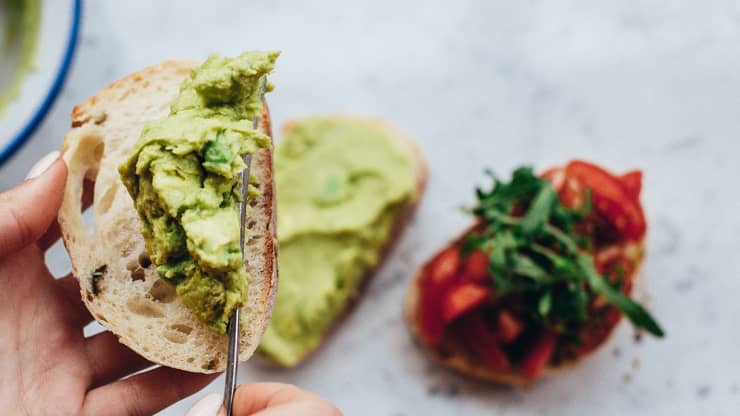If you’ve read a lifestyle article or watched a cooking show in the past decade, there’s a good chance you’ve heard the phrase “meal prep.” A quick search of the hashtag #mealprep on Instagram returns more than 9 million posts , and Google searches for the topic have exploded since 2012.
For many, it’s the key to knocking out two big goals at once: eating healthy and saving money.
What is meal prep?
No tricks here: Meal prep is preparing a dish or dishes ahead of when you expect to eat it, so that your food is ready to eat.
While it may sound like a new millennial trend, meal prepping has been around in one form or another virtually since the dawn of modern food preservation. If you’ve ever whipped up a casserole a day or two before Christmas dinner, frozen leftovers to eat later or pre-chopped veggies to use in the next day’s soup, you’ve meal prepped. It makes it faster and easier to cook a healthy meal.
What are the benefits of meal prepping?
Just like packing for a vacation the week before you leave makes it easier to get out of town the day of, doing some prep work for future meals makes it easier to cook or eat when it’s time to chow down. And that’s just the first benefit. Here are a few other big ones:
It’ll save you time. Yes, the act of meal prepping does take time. But because meal prepping often involves doing tasks in bulk, you’ll find yourself much more efficient at the task at hand — whether that involves cutting veggies or boiling starches — and producing greater volumes in the same stretch of time. The hours you save in accumulation throughout the week can be used for other activities, like going to the gym, spending time with your family or working on your side gig.
It’ll save you money. Meal prep is all about cooking at home to avoid overspending on food, which is typically one of the biggest line items in our budgets. If you regularly meal prep, you’ll inevitably spend less money on takeout or other pre-prepared foods. That’s money you can use to start investing, pay off debt or save for emergencies.
It’ll reduce food waste. The average U.S. family of four throws away just under $1,600 worth of food every year — not great for the planet or our wallets. A big part of meal prep is meal planning. Knowing what you’ll eat and when you’ll cook it can inform your grocery list, helping you only buy what you’ll use, so less ends up in the trash.
It can be healthier. Because you control all of the ingredients that go into a meal you cook for yourself, it’s possible to avoid a lot of added fats, sugar and salt that you’d find in a restaurant-prepared meal, making eating healthy easier than ever.
How to meal prep like a pro
Good news: It’s not that hard. Simply follow these steps to get started.
1. Think about what you want to eat and when
Your meal plan should:
- Consist of meals that you (and your family) actually want to eat for breakfast, lunch and dinner
- Be built around versatile ingredients like chicken, rice, eggs and vegetables that can easily be used in a number of different meals
- Offer a balanced source of nutrients
- Include enough variety that you don’t get bored and give in to takeout temptations
- Prioritize the preparation and consumption of particularly perishable foods (think: fresh seafood or non-hearty greens, like green beans and broccoli) toward the beginning of the week.
As a beginner, you should probably stick to one-week intervals at most to avoid getting overwhelmed by the process. This also provides some flexibility to adjust your meal plan if your schedule changes or you want to take advantage of weekly grocery store deals.
There are tons of meal-planning apps out there like MealTime and MealBoard that can make the process even easier. And don’t get sucked into thinking that good meals need to be complicated: It’s possible to make delicious, nutritious dishes with even just three or four ingredients.
2. Make a shopping list
With meals in mind, break them down into their component ingredients and take stock of what you have in your kitchen now versus what you’ll need to buy. As long as you know what you’ll use, buy in bulk —you can always freeze things like seasonal produce or meat to use later.
If possible, plan your shopping trip within a day or two of when you plan to do the prep work. This will keep you from buying ingredients too far in advance and then having to throw them out due to spoilage (primarily a concern for fresh produce).
3. Pick a day to do your prep
Ideally, this is a day when you have at least a few hours of free time to devote to prepping—though exactly how much time you need will depend on the kind of meal prep you plan to do.
Sunday is a popular option for preppers who work during the week, as well as those who have kids in school, but it’s not the only option. If you only want to prep a few meals’ worth of ingredients at one time, for example, try splitting your prep work between two days (like Sunday and Wednesday). If all you need to do is chop up some veggies for the next day’s meal, you can probably even get by with 20 or 30 minutes.
Ultimately, the day you choose should be the day that works for your schedule.

4. Do the prep work (and try to enjoy it!)
You’re more likely to stick with your meal prep if you enjoy it, so try to incorporate elements of entertainment or relaxation into your routine. Listen to music, an audiobook or podcast while your work, or keep the TV on in the background.
Exactly how you choose to meal prep is up to you, but some popular strategies include:
- Pre-chopping ingredients (fruits, vegetables, meats) or assembling components of meals (like spice mixes, dressings, sauces or marinades) that you’ll use throughout the week, without actually cooking anything
- Cooking large batches of pastas, rice, grains and/or vegetables that you’ll use as healthy, filling side dishes throughout the week, but waiting to cook meats and other proteins until the day that you plan to eat them
- Cooking entire meals and portioning them out ahead of time, so when it’s time to eat, all you have to do is heat up your meal
- Cooking large batches of hearty, satisfying meals (think: stews, casseroles, sauces, etc.) and freezing them in individuals portions to eat a few weeks down the line
More meal prepping tips
Keep these additional tips in mind to set yourself up for success: Take advantage of grocery store sales, especially for long-lasting ingredients, like grains, flour and frozen vegetables. For perishables you can’t use quickly, like meats and produce, stick them in the freezer.
Invest in a variety of spices, or build a collection over time, to avoid getting bored with your meals.
Invest in some high-quality, durable containers. There are even containers made specifically for food prep that come with multiple compartments to keep all of your ingredients separate until you cook or eat them. During a particularly busy week, you might be able to stretch a single takeout order into many meals with some additional meal prep. Just make sure you know how long those foods are going to last in the refrigerator.
Multi-task: Once you’re comfortable in the kitchen, you could realistically cook three meals at once — one in the oven, one on the stove and one in a crockpot, for instance. Before you know it, you could become knocking out a week’s meals all in one go.











